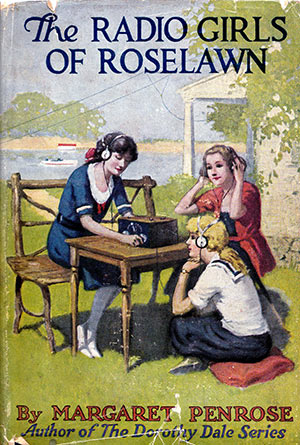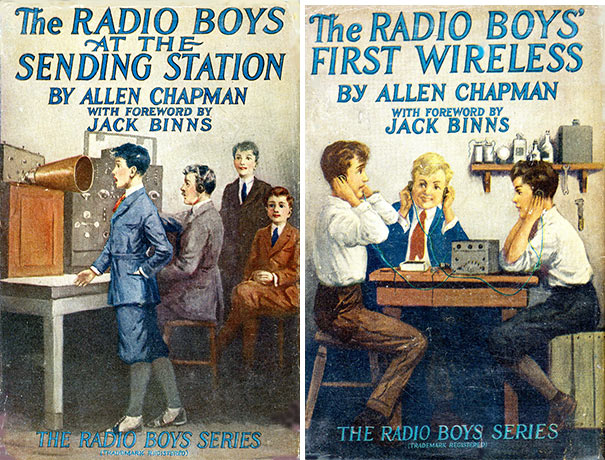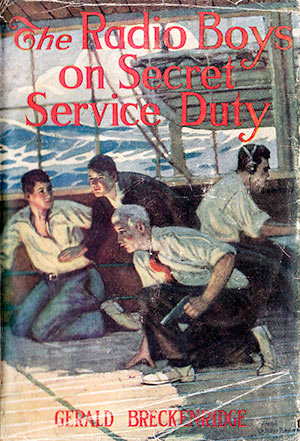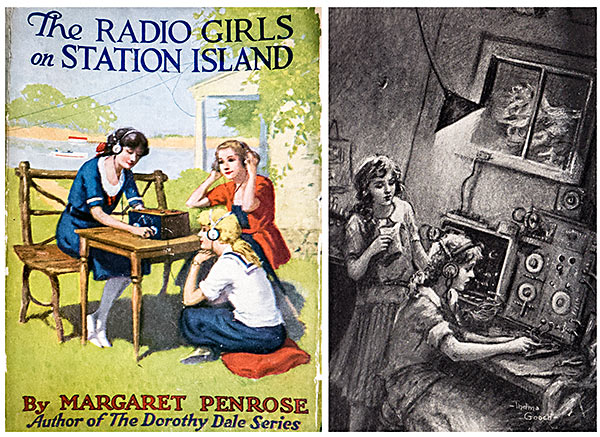 1920s Series Fiction The three most popular radio boys and girls series were published between 1922 and 1930. The early 1920s were said to be the “boom years” in broadcasting, a time when everyone was suddenly interested in having a radio set in their homes. It was said that radio came out of the basements and garages of young set builder-experimenters to became the newest form of family entertainment. The earlier forms, the phonograph and piano, were pushed aside in favor of the radio.
1920s Series Fiction The three most popular radio boys and girls series were published between 1922 and 1930. The early 1920s were said to be the “boom years” in broadcasting, a time when everyone was suddenly interested in having a radio set in their homes. It was said that radio came out of the basements and garages of young set builder-experimenters to became the newest form of family entertainment. The earlier forms, the phonograph and piano, were pushed aside in favor of the radio.
Three of the series portrayed in this book are “The Radio Boys” by Gerald Breckenridge, the “Radio Boys” by Allen Chapman, and the “Radio Girls” by Margaret Penrose. The latter two are from the Stratemeyer Syndicate. Breckenridge was a journalist, and the Syndicate authors were pseudonyms for J.W. Duffield and Bert Foster.
The Chapman boys must have been successful as they appeared in 13 volumes, and the Breckenridge boys in 10. The girls series lasted only 4 books, so it was not a successful series.
In the two covers below, the Chapman Radio Boys are at the broadcasting station and listening in. These boys remained 15 years old for the entire series while the Breckenridge boys grew up, graduated from Yale, got married. Those boys lament their situation in a “coming of age” moment: “Oh, we’ve had a few adventures in our lives. What’s there left? Now that we’ve graduated, we’ll have to settle down in business. Pretty soon some girl will come along and marry us, and then we’ll be raising families and paying taxes. Then we’ll be getting fatter and fatter, and pretty soon some kid will say: Oh, he used to be in the backfield for Yale, but that was a long time ago.”
The Breckenridge boys explore gun violence in their stories: One radio boy has a revolver, and in one story he must deal with a philosophical issue, that of killing another man. He decides to shoot his pursuers in the legs and as they fall, he feels a strange emotion: “To take deliberate aim at a human being was unnerving. It was only the realization that the safety of his comrades hung on his aim that had nerved him to the task and steeled his arm.” Next, the boys have killed four of their attackers, and are still bothered by it leading to this reasoning: “We had to do it. It was our life or theirs.” In a conversation with their father, the boys offer to fight in a revolution to which dad reacts: “You boys don’t know what you are talking about. I should imagine you would have read enough of the horrors of war during the past few years to make you never want to see a battlefield or shoot a gun at a man.”
The Radio Girls promoted the theme of gender equality. In a bookstore the proprietor shows the girls the radio books, and they tell him they are going to build a set: “You two girls? Well I don’t know why you shouldn’t. Lots of boys are doing so.” One responds: “Anything a boy can do a girl ought to do a little better.” When some boys offer to help with the antenna installation a radio girl tells him: “Not unless you approach the matter with the proper spirit. We can be met only on a plane of equality.” Later a mother tells her radio girl daughter: “Girls should be independent in everything. If they are going to work to earn their own support, as most of them do, why shouldn’t they be perfectly able to manage their other affairs?” Those are examples of positive values often presented in these 100 year-old stories.


